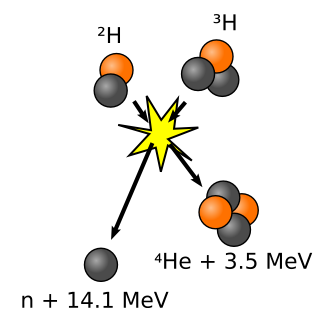I think they are using H3, Deuterium and Tritium in their “pellets”.
I think these things are a horrible idea because of energy sources getting damaged or thrown away and the environmental impact concerns.
Here’s one expert opinion on the net environmental impact:
I'm more in favor of small local power generators, they need no grid, no power lines, i'm firm believer that grid is our greatest flaw. i'm not even touching political side, which, imo is even more important than technical.
The National Academy of Sciences has a detailed paper outlining potential pathways to develop inertial confinement fusion into a commercial power source. It would be complex and a huge amount of work that might not be practically viable, although no absolute showstoppers are known:
If you prefer a visual exposition of the basic idea at a simpler level, the TV show The Expanse has a scene in the season 4 episode “Displacement” that shows it well. It’s not perfect, but I liked their portrayal so much I made my wife rewatch it a couple times so I could first make sure they had shown what I thought they did, and then explain to her what they were showing, and how cool it was that the effects team made such a detailed animation to portray a plot point, even though only a small percentage of viewers would comprehend anything beyond “the ship aint’ got no power.”
Overall, it is my strong opinion that magnetic confinement fusion has significantly more promise as a power source than inertial confinement fusion.
It’s a mix of the hydrogen isotopes deuterium and tritium, frozen into a spherical pellet at about 18 Kelvin (–427 degrees F), and packaged inside a little metal cylinder machined to extreme precision and coated with gold, although there are alternative concepts that might be possible to develop. The above paper suggests they need to figure out how to mass produce these for a cost in the $0.25-0.50 range. I don’t know a current figure, but it is almost certainly thousands or tens of thousands of dollars each.
I never bothered to look for an answer whether it is molecular or atomic hydrogen. I don’t think it matters, so I suspect molecular.
For magnetic confinement fusion, such as the ITER project, the fuel can be injected into the reactor as a gas.
No one is proposing that this is what’s happening. Deuterium + tritium are being fused into helium, effectively ‘burning’ fuel. For lack of the immense gravity, pressure, and temperatures within stars, ignition is difficult to achieve.
I do wish that the net energy gain were being framed in this context - that it’s the first time that a controlled fusion reaction has been measured that produced more heat energy than it took to ignite. Unfortunately, nuclear physics has a habit of reporting Qplasma figures (the ~1.5 this experiment achieved) rather than Qtotal (the <0.01 that was the reality). The ITER experimental reactor is expected to realize Q>10, however that claim is again against Qplasma - 500MW thermal output against 50MW net delivered input … but the operating energy is effectively 620MW; were it designed to produce electricity it might harness half of the thermal power thus Qtotal = 250MW / 620MW = 0.403.
And that’s without getting into the nigh-intractable problems associated with inertial confinement (that the experiment used when) it comes to practical power generation.
It was a useful and monumental milestone in research, but by no means are practical fusion generators going to come into being anytime soon as a result.
My handful of forays into small-scale distributed generation suggests that this requires a capital investment at the residential scale that’s simply not feasible for the overwhelming majority if you want to live a 21st-centry lifestyle, however you may be thinking something entirely different that’s more cost-effective.
This isn’t “break through” isnt really relevant to the energy crisis unfolding. It could be a source of energy but at the moment it is not.
Man this is a great thread
@grin, agreed.
The director of the Lab said the time frame for this remarkable energy generation was about 85 picoseconds. (speed of light to travel 1 inch)
For 3.6 MJ or 1 kwh energy creation in this time period required a power supply of about 42 PetaWatts, i.e. 42 Quadrillion Watts. 42x10e+15
She said the laser system was the size of a football field and they can only fire it once a day.
192 lasers are focused on the inner gold surface which causes x-rays to be emitted. The wavelength of the x-ray is on the same size as the hydrogen atoms and can push them together and cause the desired reaction and release of a Helium atom and a high energy neutron; if Helium and Hydrogen can then be fused it would create a Lithium atom (grab up that lithium and make some batteries?)

Aside from the fusion part, lasers in and of themselves are highly useful devices. Probably much more so than fusion will ever be
